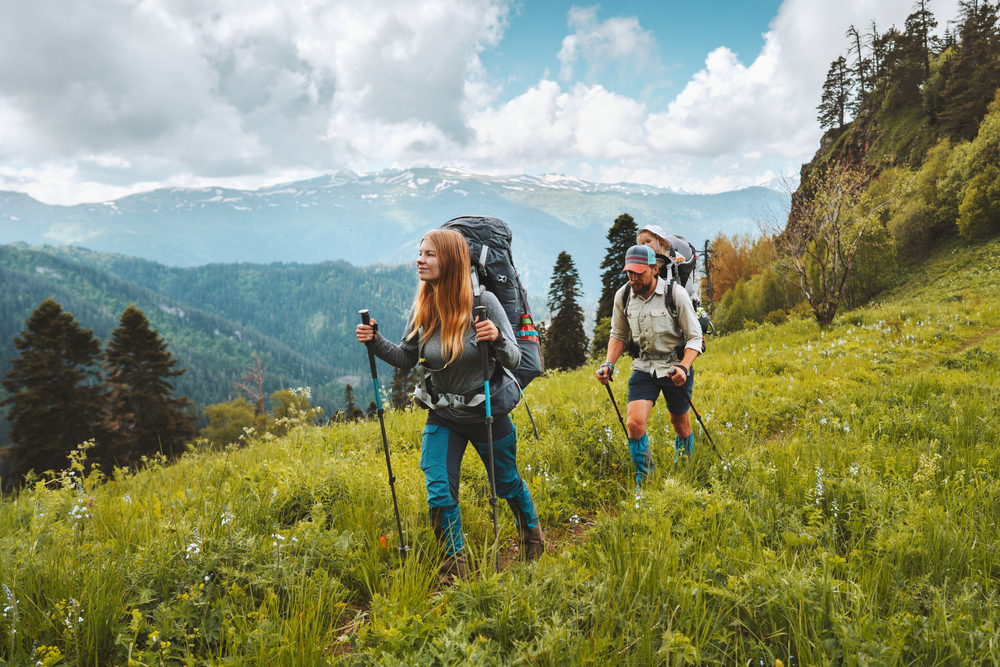Recent years have witnessed a boost in tourism. Many people now want to travel the world, see what other countries have to offer, and break away from the mundaneness of their usual lives. But let’s be honest – with that has come an increase in pollution. The flights, train rides, shopping experiences, and other touristy norms often harm the environment. And as such, more tourists have leaned on eco-tourism, seeking to reduce their adverse environmental impacts and make tourism more sustainable. So, how does this work, and how can you be a part of this movement?
The Eco-Tourist Track: What Does It Entail?
Natural areas are beautiful because they are unspoiled. But we have all seen what happens when these areas are not shielded from human impact – the resources get destroyed. Soon enough, once beautiful attractions lose their allure and contribute to the rising concerns about climatic change. Think plastic bottles on beaches, plastic papers on hiking trails, etc.
Eco-tourism focuses on reducing plant and animal life damage while upholding cultural heritage. It does so through the principles below:
- Reducing the negative effects of tourism on natural areas, e.g., water bodies and forests.
- Fostering awareness about the importance of environmental conservation,
- Maintaining respect for local cultures and minimizing negative effects on social behaviors in local communities, and
- Nurturing a positive relationship between visitors and locals by respecting their rights and beliefs.
Eco-tourism thus creates a sustainable eco-system where people can continue traveling for centuries without eroding the physical and social attractions that call to them.
Being an eco-tourist is not complicated or uncomfortable. Instead, it is as simple as changing your travel lifestyle in a few ways. As you contemplate your next travel plan, remember to ensure your passport is travel-ready. To discover passport prices and other information about getting a passport, simply click on this link.
Joining the Movement
Eco-tourism is part of the more extensive sustainable tourism, though the former mainly focuses on natural areas and communities. It takes different forms, including community development trips, lodging in eco-friendly accommodations, and boosting agrotourism. It reduces damage to natural areas, improves livelihoods in local communities by availing employment and reducing damage to natural resources, and pushes governments and NGOs to take environmental conservation more seriously.
You can be part of this fantastic initiative in the following ways:
1. Travel During the Low Season
Traveling during peak seasons comes with many disadvantages. First, getting a cheap flight is next to impossible. Secondly, the hotel prices are often almost double the low season rates. And third, most popular attractions have so many visitors that enjoying them is challenging. But did you know that this high number of tourists also overwhelms the locals and the environment? That’s right! Traveling during the low season is not only cheaper but also helps you reduce the strain on resources which is typical in the higher seasons.
2. Use Local Transport
You will likely use a plane to arrive at your destination. Is there a way to counter all that emission? Of course! Instead of using cabs to get around, consider the following options:
- Use local buses to move from one stop to the other: Most regions have such transportation options which help you limit your emissions,
- Cycle to your destination: If the roads allow you to cycle, how about working out while emitting nothing into the atmosphere? It also enables you to learn more about the region.
- Walk around: When covering short distances, you can walk as this is an excellent workout with zero negative emissions.
If these options are not available, you can use a cab. But consider sharing your ride to have a minimal impact.
3. Stay in an Eco-Lodge
Hotels and other modern accommodations are excellent. After all, they offer ACs, beautiful rooms with unique furnishings, a la carte restaurants with various cuisines, heated pools, jacuzzis, massages on call, etc. But have you ever thought about the carbon footprint in these spaces? While they might be comfortable and feature people tending to all your needs, these spaces are not kind to the environment. Consider switching to an eco-lodge which is more energy friendly and helps you live like a local. Besides, it also employs locals, allowing you to give back to the community.
4. Don’t Trash the Surroundings
Tourists consume many things on the go, from clothing to skincare products to food. And when you are not careful, disposing of the wrappers incorrectly can wreak havoc on the environment. You may figure that one sweet wrapper is not a foul move. But even if just 1,000 more people think the same thing, that would be disastrous to the local community. Find out where you can dispose of your trash. And work around recycling and reusing your plastics.



